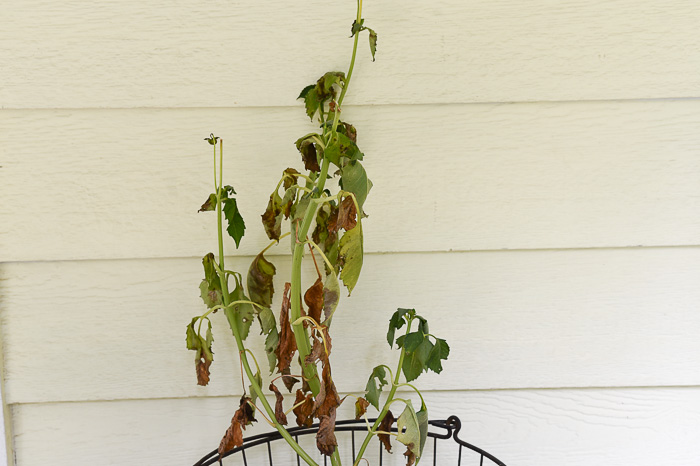Recognizing What Plants Don't Like Epsom Salt for Healthier Gardens
Wiki Article
Learn More About the Certain Plants That Are Detrimentally Influenced by Epsom Salt Application
Epsom salt, a preferred family treatment for various horticulture woes, is commonly applauded for its useful effects on plant development. Not all plants react favorably to its application. Comprehending the specific plants that can be negatively impacted by Epsom salt is critical for any garden enthusiast seeking to optimize their plant treatment regimen. Roses, tomatoes, peppers, azaleas, and rhododendrons are simply a few examples of plants that might not react well to Epsom salt. The factors behind these damaging impacts and just how to mitigate them are crucial expertise for maintaining a thriving garden.Roses

Roses, especially sensitive to adjustments in their atmosphere, can be negatively impacted by the application of Epsom salt. While Epsom salt is frequently utilized as a plant food to advertise plant growth and improve flowering, roses are among the plants that do not respond well to its application. The high magnesium material in Epsom salt can conflict with the uptake of other essential nutrients by the rose plants, bring about deficiencies that show up as yellowing fallen leaves or stunted development.

Tomatoes
Tomatoes, understood for their versatility in cooking applications, can show adverse results when revealed to Epsom salt because of their details nutrient demands. While Epsom salt is commonly promoted as a solution for numerous plant issues, consisting of blossom end rot in tomatoes, its application can bring about destructive outcomes otherwise used carefully. Tomatoes are heavy feeders that require a well balanced intake of nutrients, especially calcium, to thrive. Too much Epsom salt, which is magnesium sulfate, can interfere with the fragile nutrient equilibrium needed by tomatoes, potentially bring about deficiencies in various other vital nutrients like calcium. This discrepancy might show up in signs such as stunted growth, yellowing leaves, or even minimized fruit manufacturing in tomatoes. When thinking about the use of Epsom salt on tomatoes, it is vital to adhere to suggested application prices and dirt screening to prevent unexpected effects on the general health and efficiency of these precious yard plants.Peppers
Peppers, prized for their various colors and degrees of spiciness, can demonstrate sensitivity to negative effects from Epsom salt when not applied with treatment and consideration for their details dietary requirements. what plants don't like epsom salt. Peppers, coming from the Solanaceae household, need a fragile balance of nutrients to grow. While Epsom salt is known to improve magnesium degrees in plants, extreme application can interrupt this equilibrium, bring about damaging results on pepper plantsWhen peppers are subjected to high degrees of magnesium from Epsom salt, it can disrupt the plant's ability to soak up other vital nutrients like calcium and potassium. This inequality might manifest in signs and symptoms such as leaf staining, stunted growth, and minimized fruit manufacturing. Furthermore, the excessive magnesium can change the soil pH, more exacerbating nutrient uptake issues for peppers.

Rhododendrons
Provided the sensitivity of specific plant varieties to discrepancies caused by Epsom salt, it is vital to think about the effect on Rhododendrons, which likewise need certain nutrient levels to prosper. Rhododendrons are acid-loving plants that prefer acidic soil conditions with a pH range between 4.5 and 6.0. Epsom salt, chemically called magnesium sulfate, can alter the soil pH and interrupt the delicate equilibrium of nutrients crucial for Rhododendron health.
To maintain the optimum growth and health and wellness of Rhododendrons, it is vital to avoid the indiscriminate this contact form use Epsom salt check out here and instead concentrate on giving the certain acidic dirt conditions and nutrients that these plants require for growing.
Azaleas
These preferred flowering plants are frequently located in yards, parks, and landscapes due to their charm and flexibility. While Epsom salt is typically used as a treatment for magnesium deficiency in plants, its application to azaleas can have negative effects.When Epsom salt is applied to azaleas, it can alter the soil pH, making it much more acidic. Azaleas choose a little acidic soil problems, and an excess of magnesium from Epsom salt can disrupt this balance, leading to nutrient inequalities and possible toxicity issues. The incorrect application of Epsom salt can lead to stunted growth, yellowing of fallen leaves, and general decline in the wellness of azaleas. It is crucial to be cautious when thinking about the usage of Epsom salt on azaleas to avoid any unfavorable effects on these fragile decorative hedges.
Conclusion
To conclude, it is very important to be knowledgeable about the details plants that can be detrimentally influenced by the application of Epsom salt. Roses, tomatoes, peppers, azaleas, and rhododendrons are some examples of plants that might not profit from Epsom salt and might also experience injury. It is important to research and understand the needs of each plant varieties before utilizing Epsom salt as a plant food to guarantee their wellness and wellness.
Recognizing the particular plants that can be adversely affected by Epsom salt is essential for any kind of gardener looking to enhance their plant treatment routine. While Epsom salt is generally made use of as a fertilizer to advertise plant growth and boost flowering, roses visit the website are one of the plants that do not respond well to its application.Too much use of Epsom salt can also result in an accumulation of salts in the dirt, leading to root damages and dehydration of the rose plants. While Epsom salt is known to improve magnesium degrees in plants, extreme application can interrupt this balance, leading to adverse effects on pepper plants.
The high salt material in Epsom salt can likewise dry out Rhododendron origins, causing further stress and anxiety and damages to the plant. (what plants don't like epsom salt)
Report this wiki page